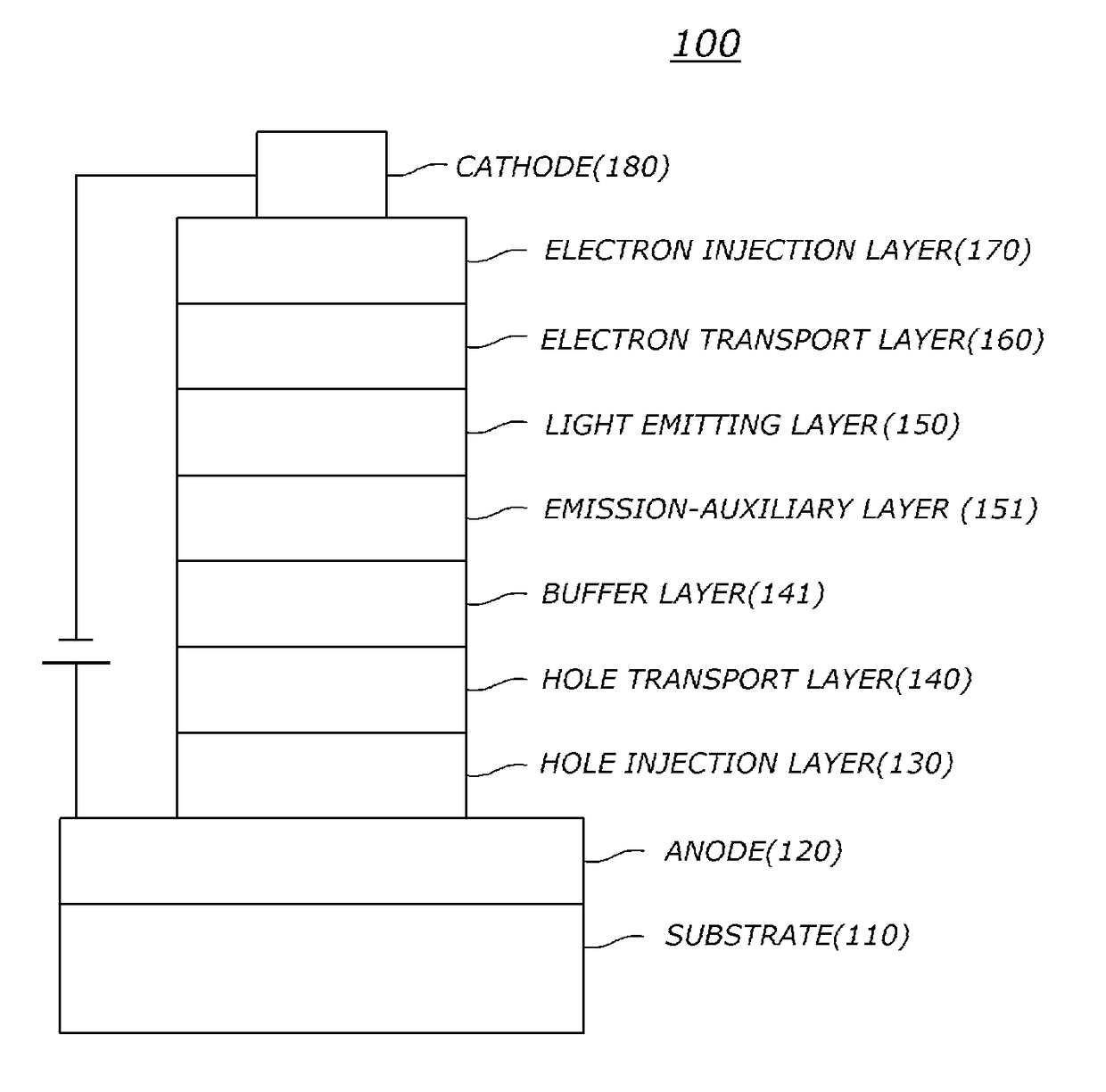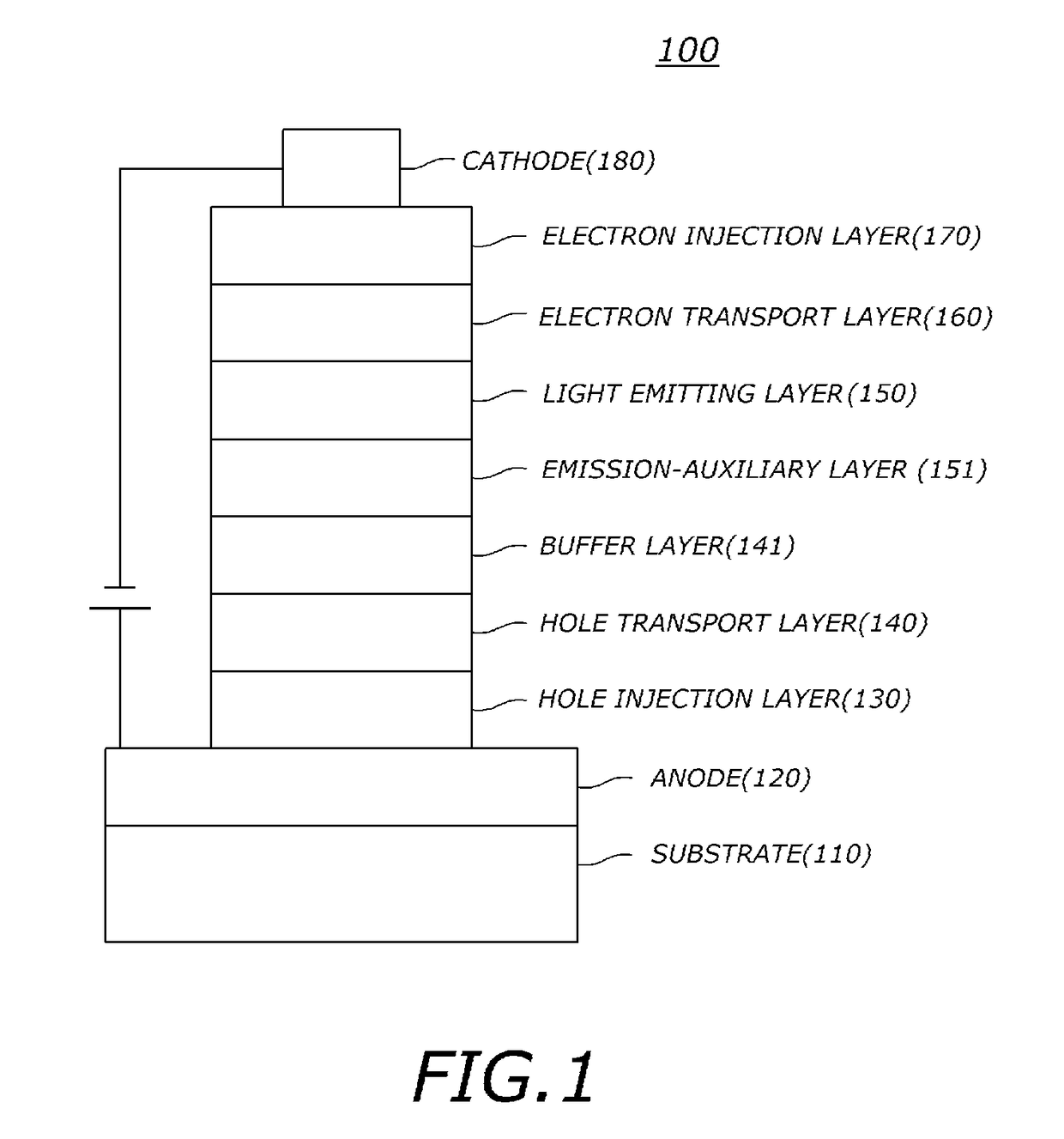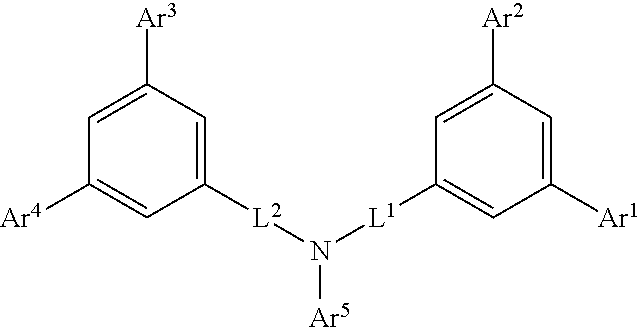Organic electronic element using a compound for organic electronic element, and an electronic device thereof
a technology of organic electronic elements and compound, which is applied in the direction of organic chemistry, luminescent compositions, chemistry apparatus and processes, etc., can solve the problems of increasing power consumption, efficiency and life span problems, and power consumption is a very important factor, so as to improve luminescence efficiency, reduce power consumption, and reduce power consumption.
- Summary
- Abstract
- Description
- Claims
- Application Information
AI Technical Summary
Benefits of technology
Problems solved by technology
Method used
Image
Examples
synthesis example
I. Synthesis Example of Compounds Represented by Formula 1
[0096]The compounds (final products) of the present invention represented by Formula 1 can be synthesized by reaction of Sub 1 and Sub 2 as illustrated in, but not limited to, the following Reaction Scheme 1.
1. Synthesis Example of Compound Sub 1
[0097]Compound Sub 1 of the above Reaction Scheme 1 can be synthesized, but not limited to, by the following Reaction Scheme 2.
[0098]Synthesis Examples of compounds comprised in Sub 1 are as followings.
(1) Synthesis Example of Compound Sub 1(1)
[0099]
[0100]1) Synthesis of Compound Sub 1-3(1)
[0101]Sub 1-1(1) (0.3 g, 20 mmol), Sub 1-2(1) (6.2 g, 20 mmol), Pd2(dba)3 (0.5 g, 0.6 mmol), P(t-Bu)3 (0.2 g, 2 mmol), t-BuONa (5.8 g, 60 mmol) and toluene (300 mL) were loaded into a round bottom flask and then the reaction proceeded at 100° C. After the completion of the reaction, a reaction product was extracted with CH2Cl2 and water. The organic layer was dried with MgSO4 and concentrated. The c...
PUM
| Property | Measurement | Unit |
|---|---|---|
| thickness | aaaaa | aaaaa |
| thickness | aaaaa | aaaaa |
| thickness | aaaaa | aaaaa |
Abstract
Description
Claims
Application Information
 Login to View More
Login to View More - R&D
- Intellectual Property
- Life Sciences
- Materials
- Tech Scout
- Unparalleled Data Quality
- Higher Quality Content
- 60% Fewer Hallucinations
Browse by: Latest US Patents, China's latest patents, Technical Efficacy Thesaurus, Application Domain, Technology Topic, Popular Technical Reports.
© 2025 PatSnap. All rights reserved.Legal|Privacy policy|Modern Slavery Act Transparency Statement|Sitemap|About US| Contact US: help@patsnap.com



